How Big Are Wolves Compared to Dogs? Size Chart & Key Differences
Updated on
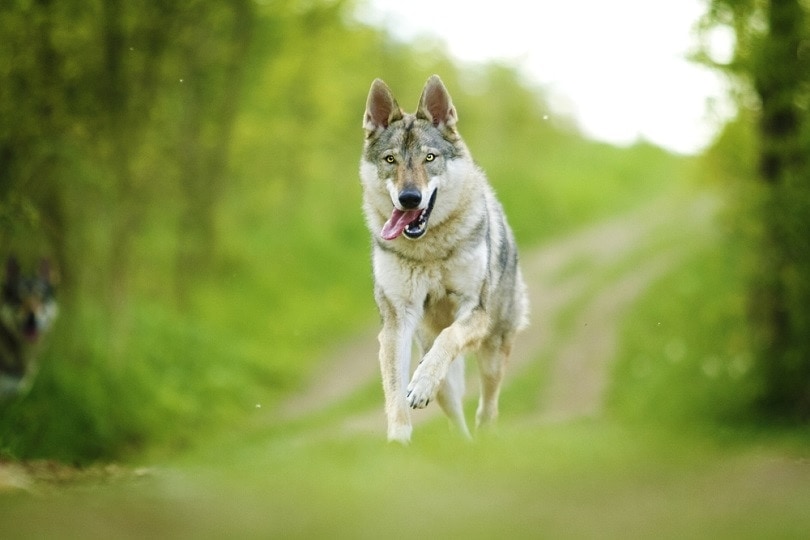
Dogs and wolves are both canines, falling under the Canidae family which also includes foxes, coyotes, dingoes, and jackals. These separate species have some similarities but also plenty of key differences.
It’s no secret that domesticated dogs come in all different shapes and sizes, but how exactly do our beloved canine companions compare in size to their wild wolf cousins? Well, that depends on what dog breed you are comparing them with.
In this article, we’ll take a closer look into the size comparison between wolves and different breeds of domestic dogs. We’ll also discuss some of their similarities and key differences, so you can gain a better understanding of just how different the two have evolved to be.
 Wolves and Dogs – The Size Difference
Wolves and Dogs – The Size Difference
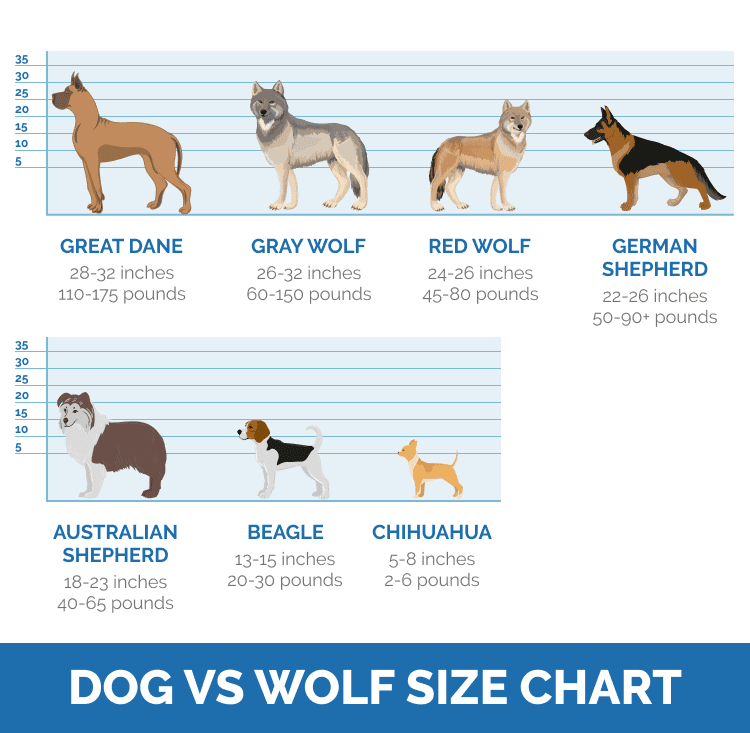
There are various species of wolf, so their sizes also vary, though not nearly as drastically as dogs. Since domesticated dogs vary significantly, certain dog breeds may be taller and/or heavier than even the gray wolf, which is considered the largest species of canid on the planet. While some dogs may be bigger, wolves are still much larger than your average dog and outperform them in endurance, strength, and bite force.
| Canine | Height | Weight |
| Gray Wolf | 26-32 inches | 60-150 pounds |
| Red Wolf | 24-26 inches | 45-80 pounds |
| Great Dane | 28-32 inches | 110-175 pounds |
| German Shepherd | 22-26 inches | 50-90+ pounds |
| Australian Shepherd | 18-23 inches | 40-65 pounds |
| Beagle | 13-15 inches | 20-30 pounds |
| Chihuahua | 5-8 inches | 2-6 pounds |
The Similarities Between Dogs and Wolves
DNA
Though they are different species, wolves and dogs belong to the same genus, known as Canis. DNA evidence has proven they share approximately 98.8% of the same DNA. They are even capable of interbreeding, though the hybrid offspring are often sterile.
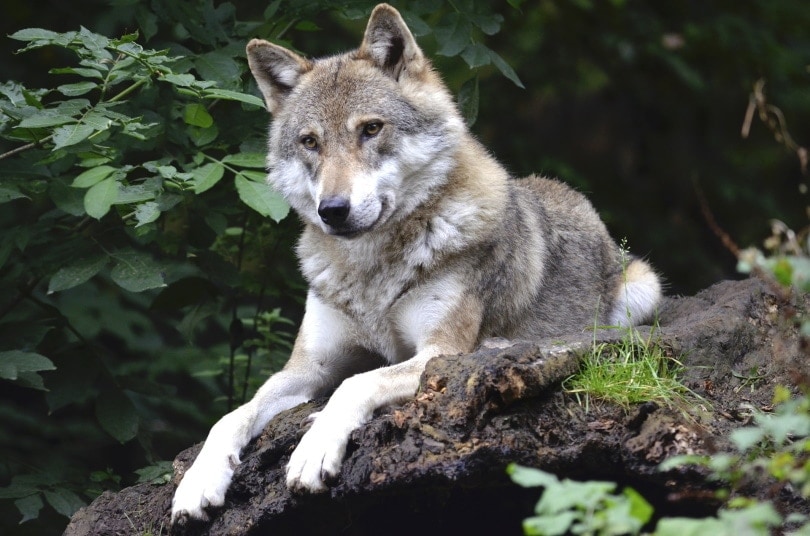
Life Expectancy
Both domesticated dogs and wolves share a similar life expectancy of about 12 to 14 years when in a captive environment. The life of a wild wolf may be cut short due to the harshness of life in the wild, but wolves have even been known to exceed 15 years of age in captivity.
Of course, the lifespan of domestic dog breeds can vary significantly, with the tiny Chihuahua living up to 16 years or more and the Great Dane averaging 7 to 10 years.
Social Needs
Both dogs and wolves are incredibly social animals that thrive in a pack environment. While they do not form the same familial groups and function differently overall, their social lives are very important to them. Of course, wolves are dependent on their packs for survival while dogs are dependent on their human family.
Domestic dogs will often show off their pack mentality, as some individuals will be more dominant and others more submissive. Each individual has a place within the pack, which is why humans need to establish themselves as the leader.
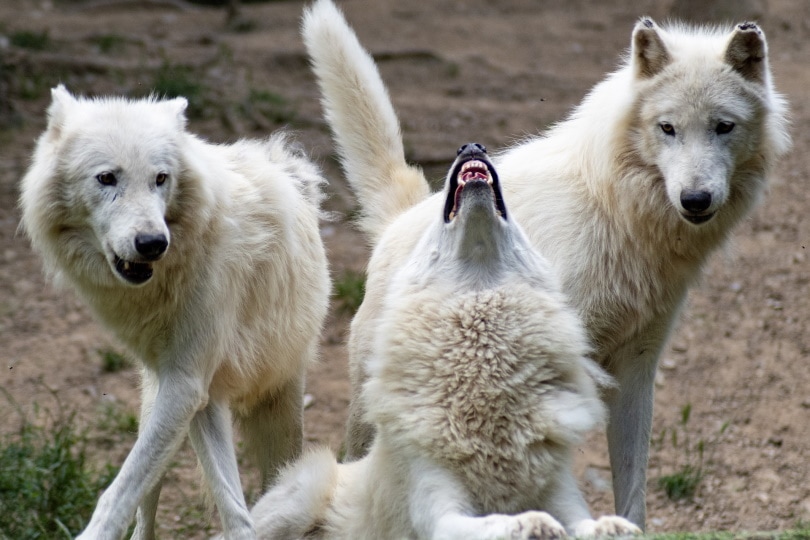
 The Biggest Differences Between Wolves and Dogs
The Biggest Differences Between Wolves and Dogs
There may be few similarities between wolves and dogs but there are certainly more differences between the two. Here’s a more comprehensive look at how wolves and dogs differ:
Physical Traits Differ Greatly
Dogs have a very long history of domestication and selective breeding, resulting in a wide variety of sizes, body types, and physical and behavioral traits. Some dogs look much more like wolves than others, especially the Siberian Husky, the Alaskan Malamute, and the German Shepherd.
A wolf’s skull and jaw are much larger and stronger than a domesticated dog, though they do have the same number of teeth. They also have larger paws, with the two front and middle toes being longer than their side toes, allowing them to spring across long distances.
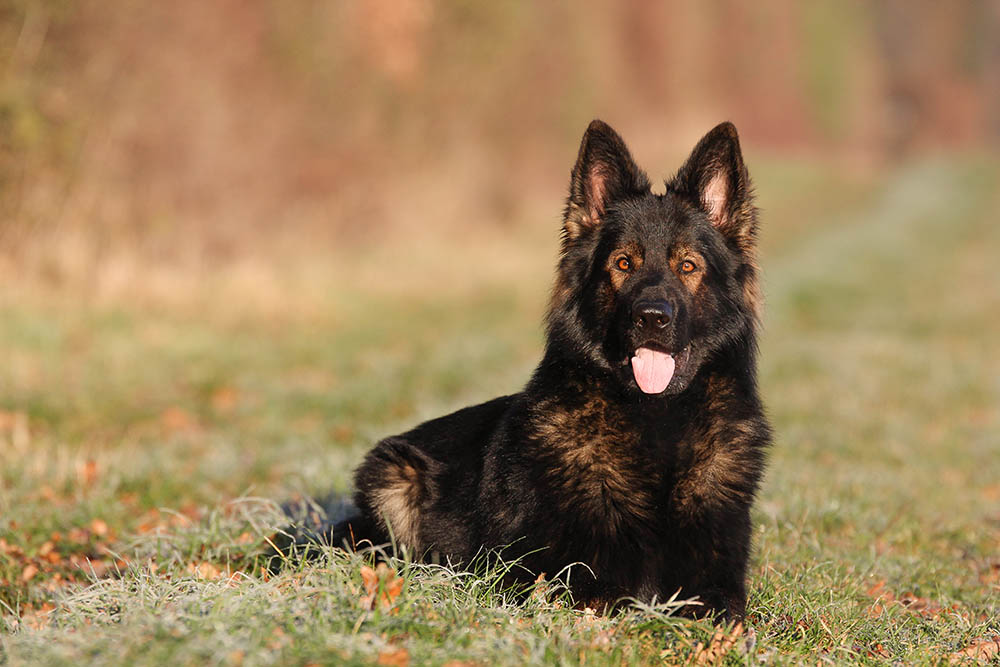
Wolves Mature More Quickly
Both wolves and dogs are typically weaned around 8 weeks of age, wolves mature much more quickly than dogs. Studies have shown that wolves are capable of solving puzzles at a much younger age when compared to domestic dogs, which is likely important for their survival in the wild.
Sanctuaries and those that attempt to domesticate wolves often find they become quite unruly and difficult to handle after about 6 months of age when they begin to near sexual maturity.
There Are Reproductive Differences
Domesticated dogs can breed at least twice and sometimes up to several times per year due to their heat cycles while wolves only breed once per year. The mating season for wolves ranges from February through mid-March and pups are born in April and May.
Wolves often give birth to 4 to 5 pups, while litter sizes for dogs can vary significantly. Most dogs average between 5 and 7 puppies per litter but smaller breeds may only give birth to 1 to 3 while some larger breeds may have up to 10 puppies or more.
Both the mother and father wolf play a role in rearing the pups, while in domesticated dogs the mother is the only parent to nurture the offspring.
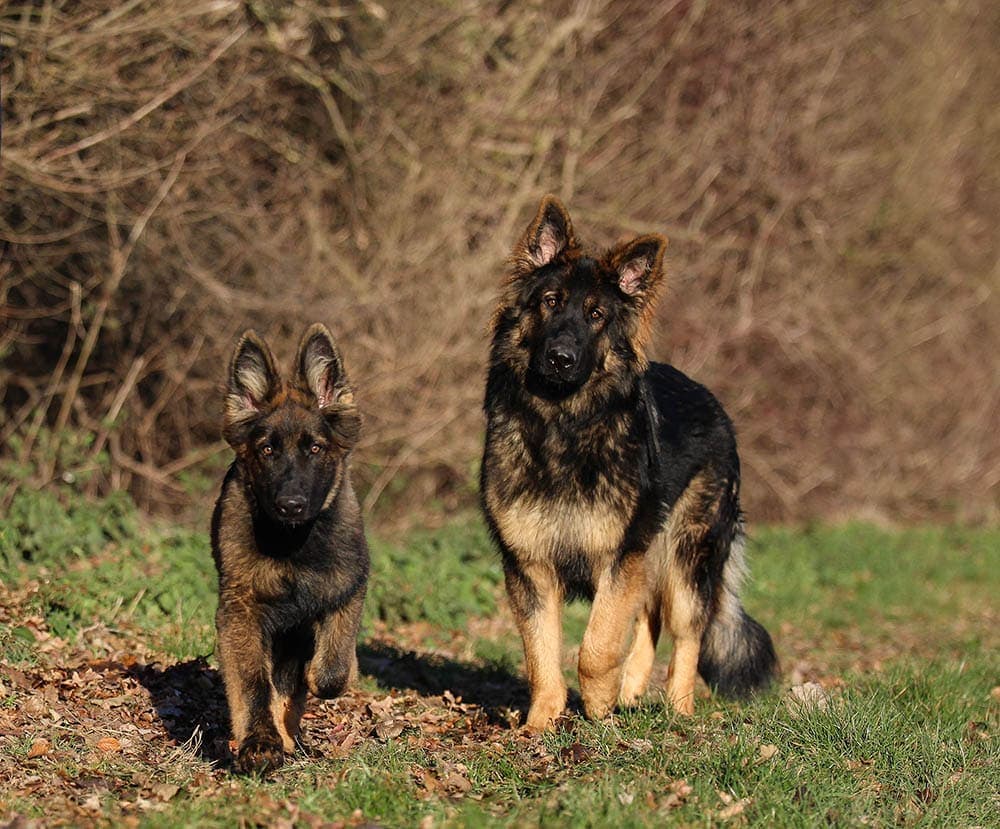
Dogs Are Domesticated
Evidence suggests that dogs were the first animals to ever be domesticated by humans thousands of years ago. While certain dogs still maintain a more wolf-like appearance, their overall temperament, instincts, and behaviors are very different.
So many years of domestication have resulted in dogs being dependent on humans, while wolves have maintained their wild nature and do not have any dependence on humans at all. Studies have even shown that wolves fail to form attachments to humans, even in circumstances where humans are their caregivers.
Wolves form very strong bonds with their packs, while dogs form very close bonds with humans, even more so than other dogs. Even feral dogs often struggle to survive in the wild due to their many years of domestication leaving them less equipped for life in the wild.
Their Play Means Different Things
Much like puppies, wolf pups are also very playful. This playfulness is necessary for survival, though. Play at an early age teaches them how to hunt, defend themselves, and establish a place among the rankings of their pack. On the other hand, domesticated dogs play for fun and while some natural instincts remain intact, they do not need to play for the sake of their survival.
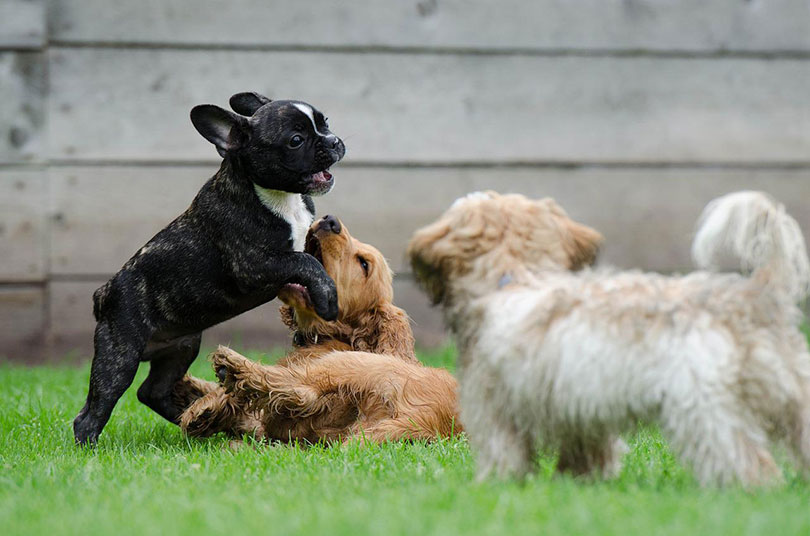
Dogs Are Social While Wolves Are Shy
Wolves will do their best to avoid humans and keep a safe distance. They may be portrayed as vicious predators, and while they are their typical prey sources, attacks on humans are exceptionally rare. Researchers focusing on wolf behavior at Yellowstone National Park even confirmed that when their team approached a pack of wolves that had just taken down prey, they retreated instead of protecting their meal.
Wolves Are Better Problem Solvers
There are some incredibly intelligent dog breeds out there that are excellent problem solvers, but studies have shown in favor of wolves as being superior to our beloved domestic canines. Dogs have shown that they rely much more heavily on humans for their problem-solving and would give up more easily while wolves worked alongside other wolves and were much more likely to get their puzzles solved.
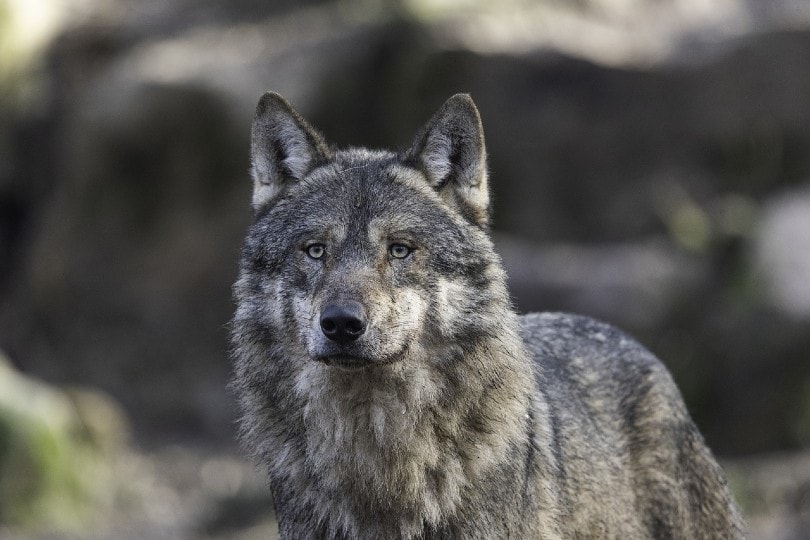
Dogs Have Evolved to Have Different Nutritional Needs
Wolves are considered true carnivores and their digestive systems are designed to process raw meat, go longer between meals, and absorb nutrients differently than domesticated dogs. Dogs have evolved to eat a more omnivorous diet and cannot as easily fight off pathogens found in raw meat as their wild ancestors.
Wolves will also eat large quantities at once since they do not know how long it will be before they take down their next prey item. Depending on the species of wolf, some may eat between 10 and 20 pounds of meat at once.
 Final Thoughts
Final Thoughts
While some of the largest breeds of domesticated dogs may exceed the height and weight of the gray wolf, wolves are still substantially larger than most dogs. They are also stronger, have more endurance, and have a more powerful bite force, making them well-built for the rugged wilderness they call home. While wolves and dogs share similar ancestry, they differ in many ways. Dogs are most definitely the ideal companions for people, while wolves belong in the wild with their pack.
Featured Image Credit: Best dog photo, Shutterstock
 Wolves and Dogs – The Size Difference
Wolves and Dogs – The Size Difference
 The Biggest Differences Between Wolves and Dogs
The Biggest Differences Between Wolves and Dogs Final Thoughts
Final Thoughts








